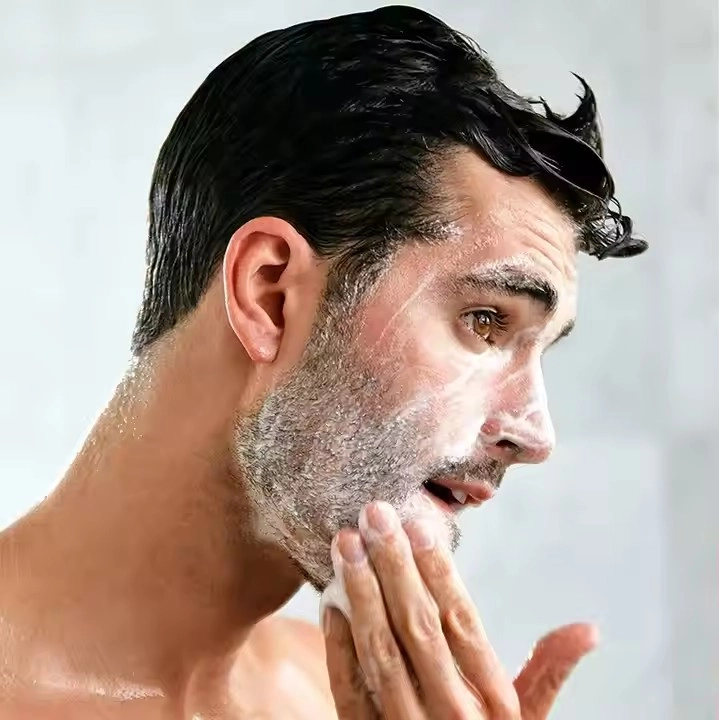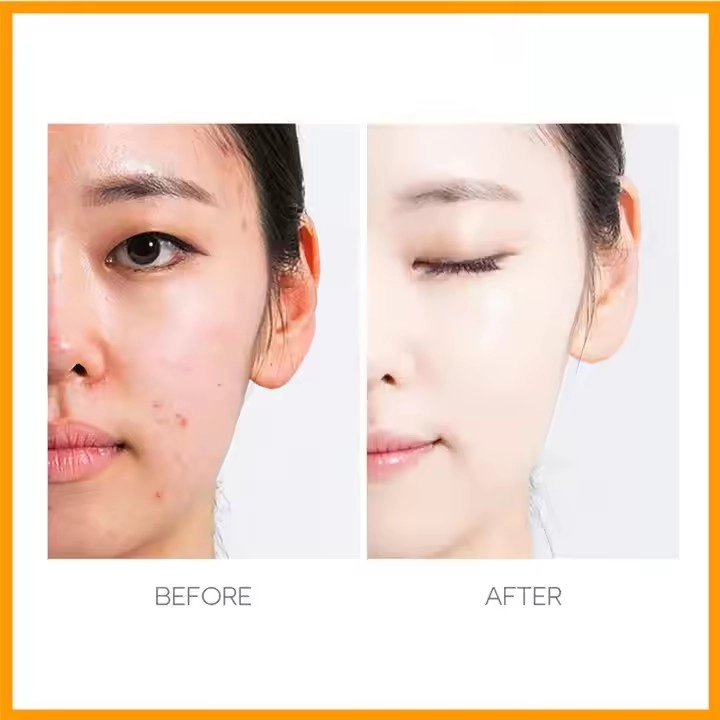Views: 220 Author: cosmeticsinhot Publish Time: 2025-11-05 Origin: Site








Content Menu
● Understanding Facial Cleansers
>> The Importance of Choosing the Right Cleanser
● What Are Gel Facial Cleansers?
>> Key Characteristics of Gel Cleansers
● What Are Cream Facial Cleansers?
>> Key Characteristics of Cream Cleansers
>> Benefits of Cream Cleansers
● Comparing Gel and Cream Cleansers
● Choosing the Right Cleanser for Your Skin Type
>> Oily Skin
>> Dry Skin
● How to Use Gel and Cream Cleansers
● Common Misconceptions About Cleansers
>> 1. All Cleansers Are the Same
>> 2. Gel Cleansers Are Always Better for Oily Skin
>> 3. Cream Cleansers Are Only for Dry Skin
When it comes to skincare, choosing the right facial cleanser is crucial for maintaining healthy skin. Among the myriad of options available, gel and cream facial cleansers are two popular choices. Each type has its unique properties, benefits, and ideal use cases. In this article, we will explore the differences between gel and cream facial cleansers, helping you make an informed decision for your skincare routine.

Facial cleansers are products designed to remove dirt, oil, makeup, and impurities from the skin. They play a vital role in maintaining skin health by preventing clogged pores, breakouts, and dullness. The choice of cleanser can significantly impact your skin's appearance and texture, making it essential to understand the various types available.
Selecting the right facial cleanser is not just about personal preference; it is about understanding your skin type and its specific needs. Different skin types—such as oily, dry, combination, and sensitive—react differently to various formulations. Therefore, knowing the characteristics of gel and cream cleansers can help you choose the best option for your skin.
Gel facial cleansers are typically water-based and have a lightweight, gel-like consistency. They are designed to provide a deep clean without stripping the skin of its natural moisture. Gel cleansers often contain ingredients that help to dissolve excess oil and impurities, making them particularly suitable for oily and acne-prone skin.
1. Texture: Gel cleansers have a clear, jelly-like texture that lathers well when mixed with water.
2. Formulation: They often contain ingredients like salicylic acid, tea tree oil, or glycolic acid, which help to exfoliate and unclog pores.
3. Skin Type Suitability: Gel cleansers are ideal for oily and combination skin types, as they help control excess oil and prevent breakouts.
- Deep Cleansing: Gel cleansers penetrate deep into the pores, effectively removing dirt and oil.
- Refreshing Feel: The lightweight texture provides a refreshing sensation, making them perfect for hot weather or after workouts.
- Non-Comedogenic: Many gel cleansers are formulated to be non-comedogenic, meaning they won't clog pores.
Cream facial cleansers, on the other hand, have a thicker, creamier consistency. They are often oil-based or contain moisturizing ingredients, making them suitable for dry or sensitive skin types. Cream cleansers are designed to gently cleanse the skin while providing hydration.
1. Texture: Cream cleansers have a rich, creamy texture that feels luxurious on the skin.
2. Formulation: They often include hydrating ingredients like glycerin, shea butter, or oils that nourish the skin.
3. Skin Type Suitability: Cream cleansers are best for dry, sensitive, or mature skin types, as they help to maintain moisture levels.
- Hydration: Cream cleansers provide essential moisture, making them ideal for dry skin.
- Gentle Cleansing: They cleanse without stripping the skin of its natural oils, reducing the risk of irritation.
- Soothing Properties: Many cream cleansers contain soothing ingredients that can calm redness and inflammation.
To better understand the differences between gel and cream facial cleansers, let's compare them across several key factors.
- Gel Cleansers: Lightweight and watery, gel cleansers lather easily and provide a refreshing feel.
- Cream Cleansers: Thick and creamy, these cleansers offer a rich texture that feels nourishing on the skin.
- Gel Cleansers: Often contain exfoliating agents and are formulated to target excess oil and acne.
- Cream Cleansers: Typically include moisturizing ingredients that hydrate and soothe the skin.
- Gel Cleansers: Best suited for oily and acne-prone skin types.
- Cream Cleansers: Ideal for dry, sensitive, or mature skin types.
- Gel Cleansers: Provide a deep clean, effectively removing oil and impurities.
- Cream Cleansers: Cleanse gently while maintaining moisture, making them less effective for heavy makeup removal.
- Gel Cleansers: Offer a refreshing and invigorating sensation.
- Cream Cleansers: Provide a soothing and comforting feel, especially for dry skin.
Understanding your skin type is essential when selecting between gel and cream cleansers. Here's a quick guide to help you choose the right product:
If you have oily skin, gel cleansers are your best bet. They help control excess oil and prevent breakouts while providing a thorough cleanse. Look for gel cleansers with salicylic acid or tea tree oil for added benefits.
For those with dry skin, cream cleansers are ideal. They provide hydration and nourishment, preventing the skin from feeling tight or stripped after cleansing. Choose a cream cleanser with moisturizing ingredients like glycerin or oils.
If you have combination skin, you may benefit from using both types of cleansers. Consider using a gel cleanser in the T-zone (forehead, nose, and chin) where oiliness is more prevalent, and a cream cleanser on the cheeks and other dry areas.
Sensitive skin types should opt for cream cleansers, as they are gentler and less likely to cause irritation. Look for fragrance-free options with soothing ingredients like aloe vera or chamomile.
Regardless of the type of cleanser you choose, proper application is key to achieving the best results. Here's a step-by-step guide for using both gel and cream cleansers effectively.
1. Wet Your Face: Start by wetting your face with lukewarm water to help the cleanser lather.
2. Apply the Cleanser: Squeeze a small amount of gel cleanser into your hands and rub them together to create a lather.
3. Massage: Gently massage the cleanser onto your face in circular motions, focusing on areas prone to oiliness.
4. Rinse: Rinse thoroughly with lukewarm water, ensuring all product is removed.
5. Pat Dry: Gently pat your face dry with a clean towel.
1. Apply to Dry Skin: Start with a dry face. Squeeze a small amount of cream cleanser into your hands.
2. Massage: Gently massage the cream onto your face, using circular motions to break down makeup and impurities.
3. Add Water: If desired, add a little water to emulsify the cream and create a milky texture.
4. Rinse: Rinse thoroughly with lukewarm water, ensuring all product is removed.
5. Pat Dry: Gently pat your face dry with a clean towel.
One common misconception is that all cleansers serve the same purpose. In reality, different formulations cater to various skin types and concerns. Understanding the differences can help you choose the right product for your needs.
While gel cleansers are often recommended for oily skin, not all gel cleansers are created equal. Some may contain harsh ingredients that can irritate the skin. It's essential to choose a gel cleanser that is gentle and effective.
Cream cleansers are often associated with dry skin, but they can also benefit sensitive or mature skin types. The key is to find a cream cleanser that suits your specific skin needs.
Choosing between gel and cream facial cleansers ultimately depends on your skin type and personal preferences. Gel cleansers are excellent for oily and acne-prone skin, providing a deep clean and refreshing feel. In contrast, cream cleansers are ideal for dry and sensitive skin, offering hydration and gentle cleansing. By understanding the differences and benefits of each type, you can make an informed decision that enhances your skincare routine.

1. Can I use both gel and cream cleansers?
Yes, you can use both types by applying a gel cleanser in oilier areas and a cream cleanser in drier areas.
2. Are gel cleansers suitable for sensitive skin?
Some gel cleansers can be harsh on sensitive skin. It's best to choose a gentle, fragrance-free option.
3. How often should I cleanse my face?
It is generally recommended to cleanse your face twice a day—once in the morning and once at night.
4. Can cream cleansers remove makeup?
Cream cleansers can effectively remove makeup, but for heavy makeup, a double cleansing method may be more effective.
5. What should I look for in a gel cleanser?
Look for gel cleansers with gentle exfoliating ingredients and those that are non-comedogenic to avoid clogging pores.
Hot Tags: China, Global, OEM, private label, manufacturers, factory, suppliers, manufacturing company